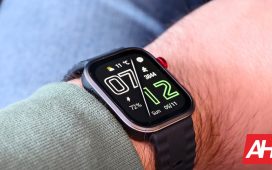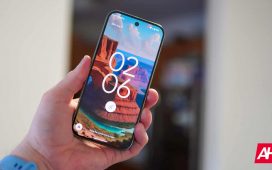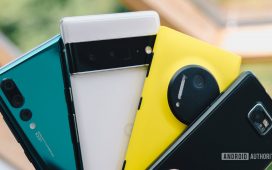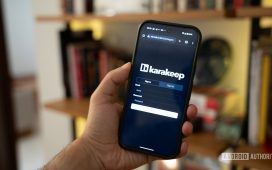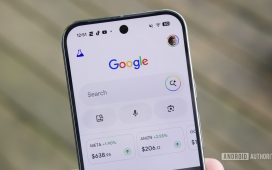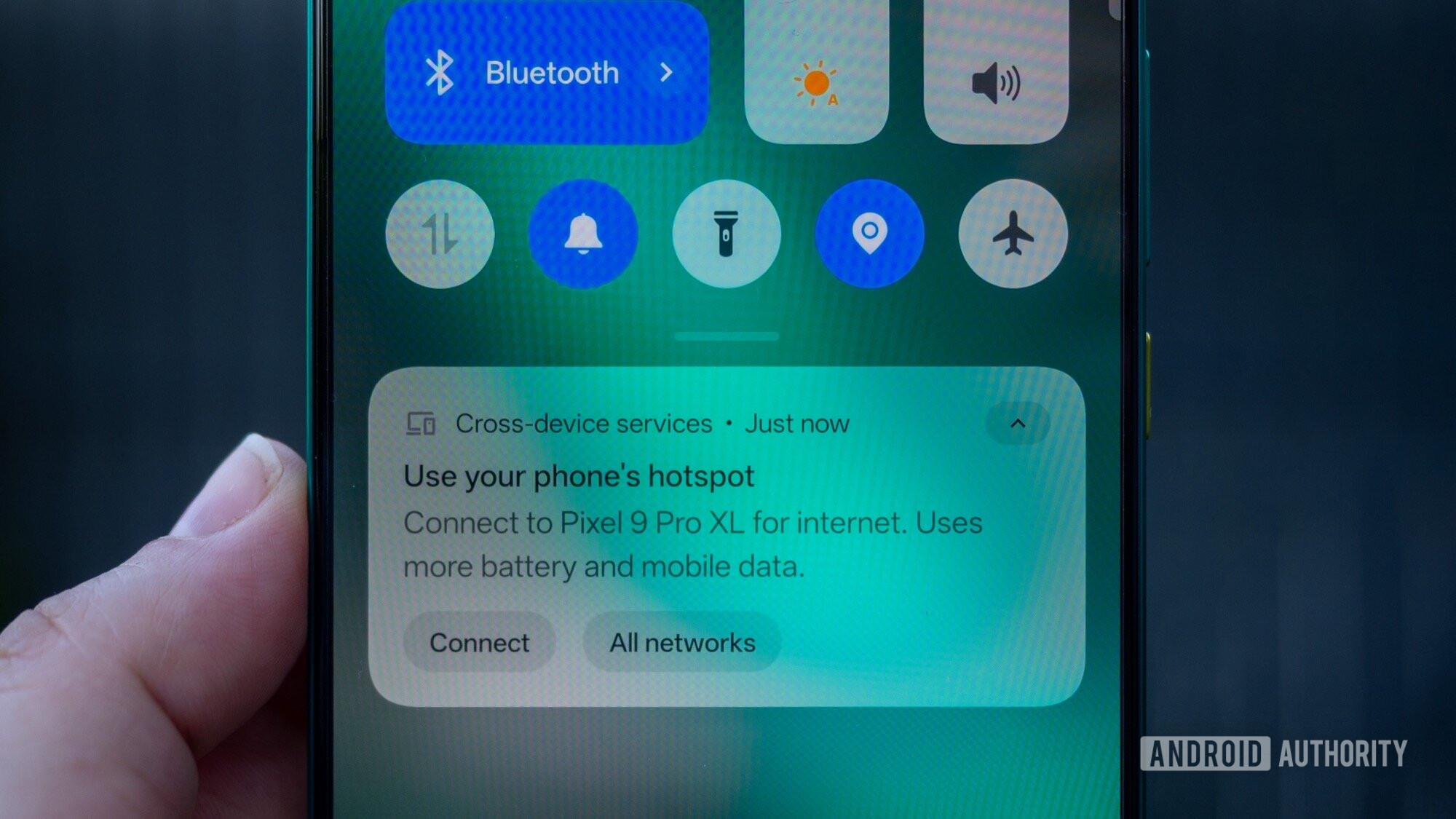
Rita El Khoury / Android Authority
For years now, we Android fans have been a bit jealous of Apple’s Continuity features and seamless integration across its ecosystem of devices. The best one of the bunch is the instant hotspot, where you don’t have to manually set up a hotspot to share your data connection with your secondary phone or tablet when they’re nearby — it just works .
You might not know, though, that Android has had this same feature since last September. It rolled out as part of a new “Cross-device services” menu, which came to many Android phones in a Play System update. If none of these words mean anything to you, you’re not alone. Everyone I’ve talked to about it — including several tech journalists and nerdy friends — had no idea about this secret Android instant hotspot option, nor how to enable it.
But that’s changing now. You no longer need to be a tech wizard to delve into Settings > Google > All services > Cross-device services > Next > and more to set it up, because Google has finally decided to turn it on by default when you set up a new Android phone.
What happens when you set up a new Android phone
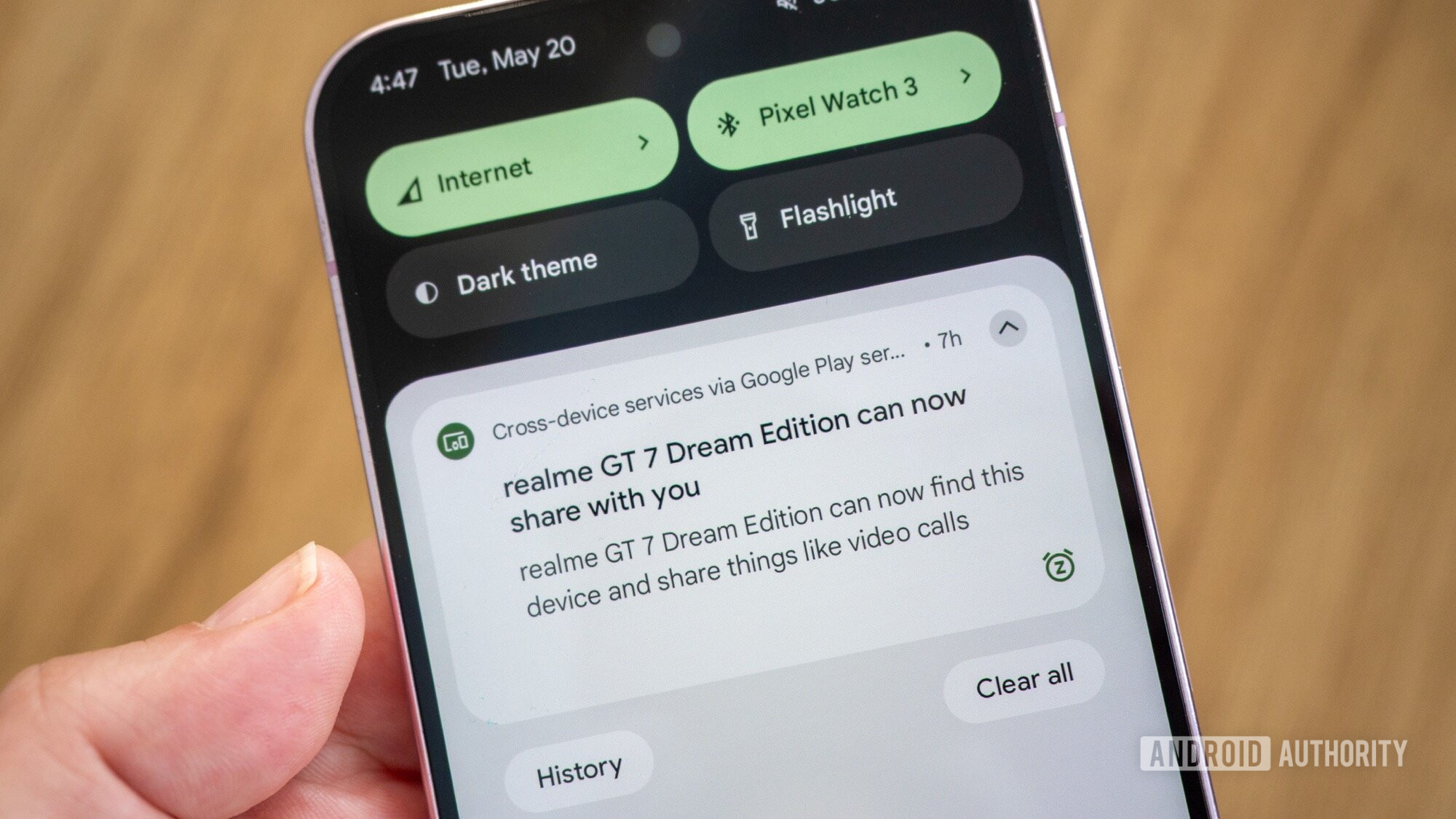
Rita El Khoury / Android Authority
I noticed this change when I was setting up a new phone, the realme GT 7 Dream Edition. But this isn’t limited to realme, and it should be the case with most new Android phones from any brand going forward. After I was done signing in with my Google account on the phone, I received a notification on my main device, the Pixel 9 Pro XL, informing me that a new phone can now share with me.
The notification came from Cross-device services and said that my new realme phone can now “find this [Pixel] device and share things like video calls.” Ah, Google, why are you hiding the ball like that and not mentioning the hotspot? I delved into Cross-device services on my realme and, of course, they were already turned on, signed into my account, added to my device group, and both current features — call casting and instant hotspot — were on, even though I hadn’t manually enabled them when setting up the phone.
So finally, after many months of a slow rollout and a silly phase where these had to be turned on by the user (check the screenshots above to see the obscure way to turn it on), Google has decided it’s time to graduate these features and just enable them for everyone. You can turn them off, of course, but the gist is that no one will have to dig that deep into obscure settings to discover that this option exists.
What happens when you don’t have a data connection
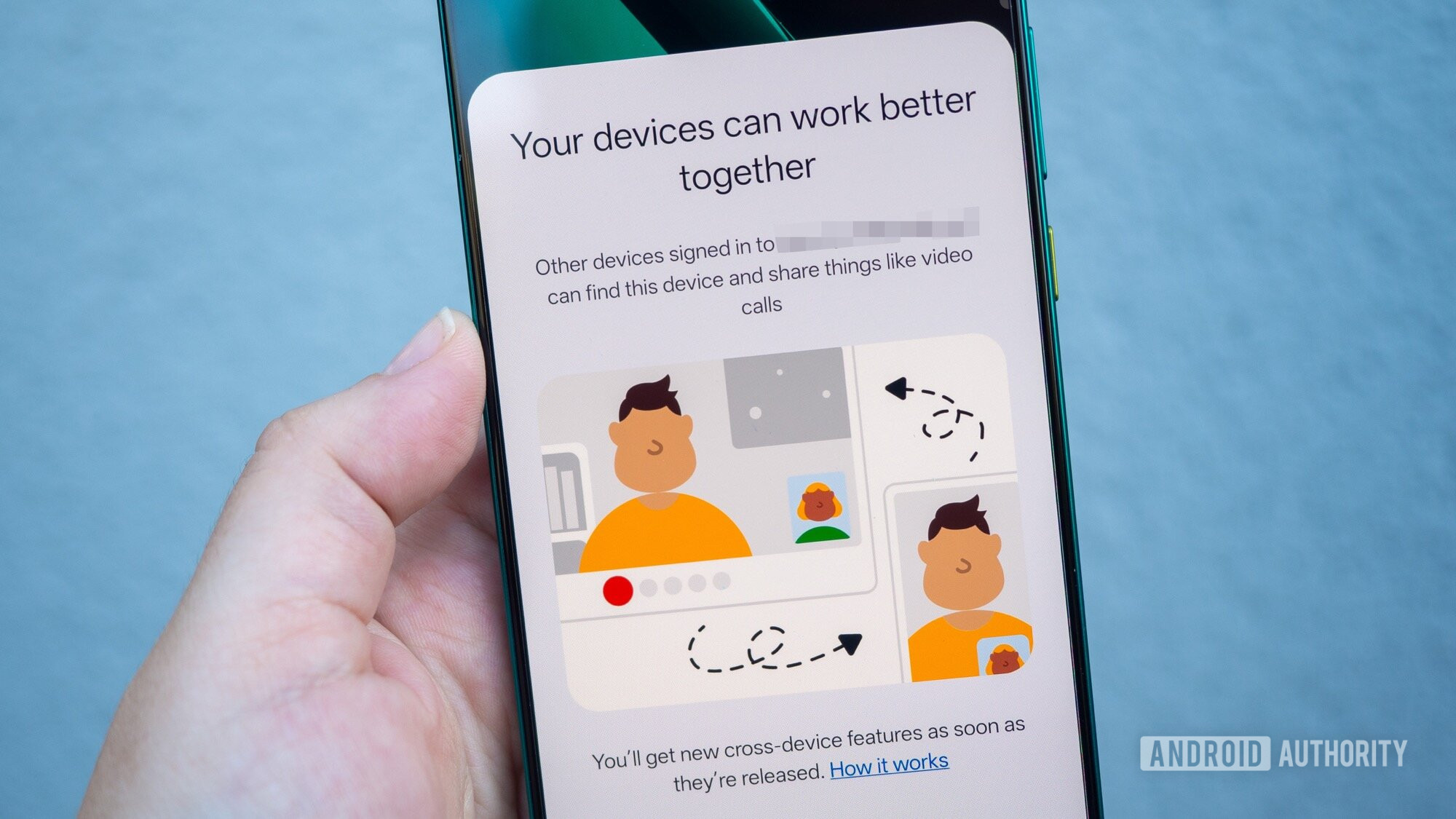
Rita El Khoury / Android Authority
With that done, it was time to put this to the test. I went out with my Pixel 9 Pro XL and realme GT 7; the former has my SIM card and complete data access, the latter doesn’t have any connection besides my home’s Wi-Fi.
After walking away from my Wi-Fi for a few minutes, I took out the realme and tried to use it. It took a few seconds for the “Use your phone’s hotspot” pop-up to show up, but it did. I tapped it, and just like that, the phone turned on my Pixel 9 Pro XL’s hotspot and connected to it without me having to even take my Pixel out of my pocket. No password set up or entry, to manual connections, nothing. It worked perfectly.
Throughout the day, I kept using the realme phone, and each time I needed a connection, I could instantly grab it from my Pixel without fussing with anything besides that one notification.
And this is what Android users who set up a new Android phone will soon experience: an option that’s turned on by default and a notification to use their nearby phone’s data when they’re using a secondary, data-less, phone or tablet.
As long as the two devices share the same Google account and are near each other, this should work seamlessly.
Some caveats to keep in mind
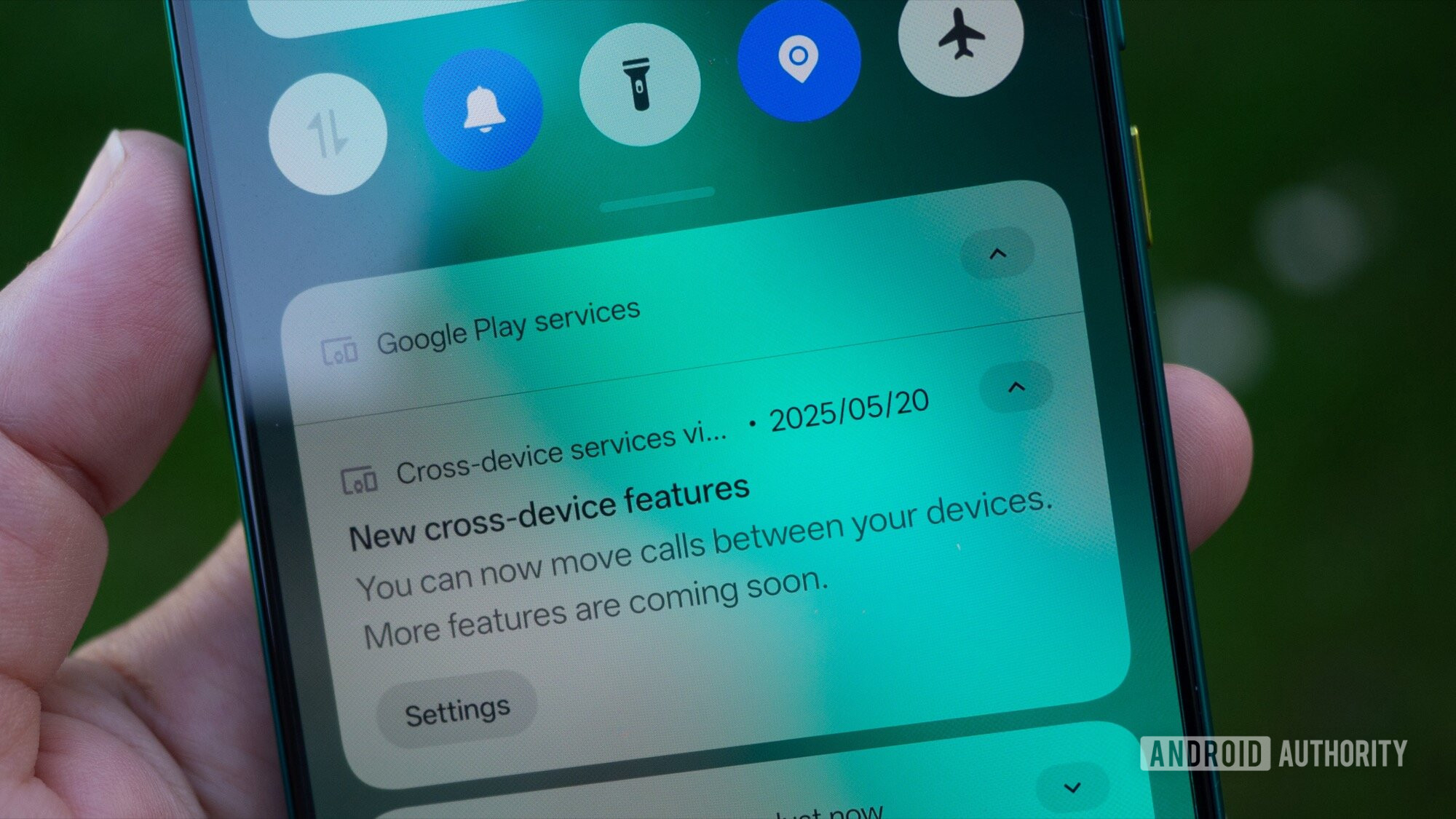
Rita El Khoury / Android Authority
So, Apple Continuity-like features are live on Android now, and all’s good in the world? Well, yes and no. I have to mention a couple of caveats that I can’t test in my current setup.
First, I suspect that your primary device will need to have Cross-device services enabled (i.e., you need to do it manually). If not, your secondary device will be enrolled, but it won’t have any phone to share with/from. So, most normal Android users won’t discover the instant hotspot or cross-device sharing until they have set up at least two new phones.
Second, I think the auto-enrollment in Cross-device services will only work when the new phone you’re trying to set up ships with a specific minimum version of Play Services out of the box. So if you buy a Galaxy S25, for example, it’s unlikely this will happen on your phone. But if you go for the S25 Edge, you have a better chance of getting it. With time, though, all newer Android phones should ship with a Play Services version that turns this on by default out of the box.
And finally, the eagle eyes among you might’ve noticed that the first notification I received mentioned “find this device.” If you got excited, thinking that Google is now turning on the Find My Device Network by default and enrolling phones in it, don’t. I made the same mistake, but I noticed that the “Find your offline devices” setting was still disabled on the GT 7. Only “Allow device to be located” was enabled. I reached out to Google, asking for clarification, and was told that, like all Android phones, this notification was simply telling me that I can now locate the phone based on its reported last-known location. Doesn’t mean it’s part of the network, contributing in all areas, or can be found by nearby Android phones acting as part of a big Bluetooth network.
This was a bit of a letdown, but I suppose Google is sticking to its guns when it comes to privacy and Find My Device / Find Hub. You have to opt in and pick the level of privacy you’re willing to give away; otherwise, it’s off.
Still, I’m very excited about the instant hotspot feature rolling out by default to more devices and users. It’s one of the most seamless experiences I’ve had between two Android phones and I want more users to benefit from it without having to dig in to opt into it.

